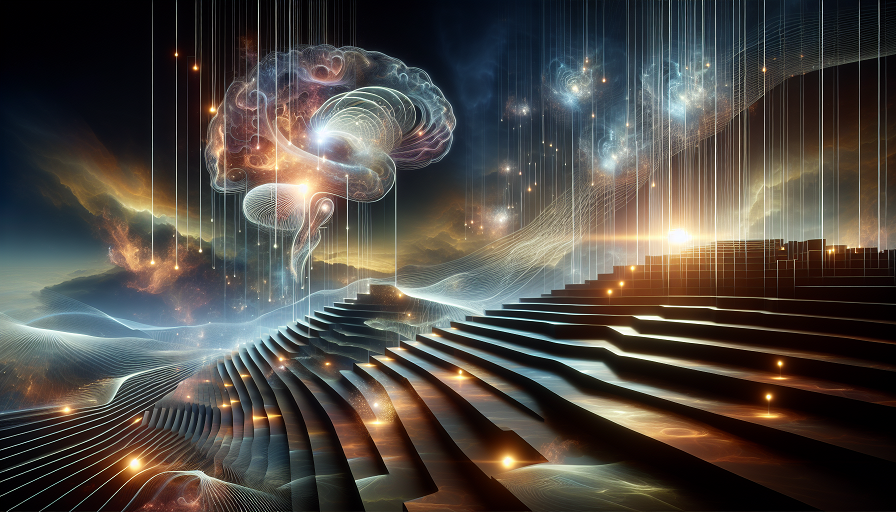
You know what time it is — or at least, you feel like you do.
You sense the minutes stretching or shrinking, remember the past, imagine the future.
But how does your brain actually map time?
This remarkable ability, known as chronoception, underpins memory, planning, decision-making, and even your sense of self.
It’s the hidden architecture of thought — so seamless you rarely notice it, yet so vital that life would unravel without it.
Understanding how the brain perceives, tracks, and manipulates time reveals profound truths about cognition, emotion, and the construction of identity — offering powerful ways to optimize mental clarity, resilience, and creativity.
Contents
- What Is Chronoception?
- The Neuroscience of Time Perception
- How Chronoception Shapes Cognition and Emotion
- When Chronoception Goes Awry
- Brain Supplements: Supporting Temporal Cognition and Executive Function
- Practical Strategies for Strengthening Chronoception
- Real-World Examples: Mastering the Mind’s Clock
- Navigating the Rivers of Time
What Is Chronoception?
Chronoception refers to the brain’s ability to perceive and interpret the passage of time — from milliseconds to years — without relying on external timekeeping devices.
Key Features of Chronoception
- Subjectivity: Time perception can stretch or contract based on emotional state, focus level, and cognitive load.
- Multi-Timescale Integration: The brain tracks rapid sequences (milliseconds) for tasks like speech comprehension, while also organizing long-term autobiographical timelines (decades).
- Dynamic Updating: Chronoception constantly recalibrates based on environmental cues, body states, and internal expectations.
Time, for the brain, is not a ticking clock — it’s a rich, flexible, living map that stitches experience into coherence.
The Neuroscience of Time Perception
Chronoception isn’t located in a single “time center” of the brain — it emerges from interactions between multiple regions working together.
Key Brain Areas Involved
- Suprachiasmatic Nucleus (SCN): Acts as the master circadian clock, regulating daily rhythms based on light input.
- Cerebellum: Plays a crucial role in fine timing for motor control and millisecond-scale temporal predictions.
- Basal Ganglia: Supports interval timing and time-based decision-making (especially seconds-to-minutes ranges).
- Hippocampus: Organizes events in temporal sequence, essential for autobiographical memory and mental time travel.
- Prefrontal Cortex: Manages future planning, temporal judgment, and abstract thinking about time.
Through the orchestration of these systems, your brain builds an internal “clockwork” far more intricate than any wristwatch could ever match.
How Chronoception Shapes Cognition and Emotion
Without accurate time perception, cognition would collapse into chaos — and emotions would lose their narrative grounding.
Cognitive Roles of Chronoception
- Memory Structuring: Organizes experiences along a temporal axis, making learning and storytelling possible.
- Decision-Making: Evaluates future outcomes based on time-delayed rewards or risks (e.g., planning retirement, choosing diets).
- Attention Allocation: Anticipates when to shift focus or prepare actions based on predicted timing patterns.
- Self-Continuity: Links past, present, and future selves into a coherent personal identity narrative.
Your sense of who you are — and where you’re going — depends fundamentally on how your brain perceives and maps time.
When Chronoception Goes Awry
Certain conditions can disrupt normal time perception, highlighting how essential and fragile this system is.
Examples of Chronoception Distortion
- ADHD: Individuals with attention-deficit/hyperactivity disorder often struggle with time estimation and temporal planning.
- Depression: Time can feel slowed or frozen, contributing to feelings of stagnation and hopelessness.
- Anxiety: Hyper-focus on future events can distort time perception, making wait periods feel unbearably long.
- Flow States: Highly immersive experiences can compress subjective time, making hours feel like minutes.
Chronoception isn’t static — it flexes, contracts, fractures, and fuses depending on mental and emotional states.
Brain Supplements: Supporting Temporal Cognition and Executive Function
Some individuals support optimal time perception and executive function with nootropic supplements aimed at enhancing memory, focus, and neural plasticity.
Ingredients such as citicoline, lion’s mane mushroom, and Rhodiola rosea are studied for their potential to strengthen attentional control, temporal judgment, and cognitive resilience — critical allies in managing the demands of modern time-intensive living.
As always, consultation with healthcare professionals ensures safe, effective supplementation.
Practical Strategies for Strengthening Chronoception
While some aspects of time perception are innate, you can actively cultivate sharper, more resilient temporal awareness.
Techniques to Enhance Temporal Skills
- Mindful Timing: Practice estimating short intervals (e.g., 10 seconds, 1 minute) without checking a clock to hone internal time tracking.
- Structured Time Use: Use visual timers, alarms, or calendars to create external supports for temporal planning and task switching.
- Future Visualization: Regularly imagine future scenarios in detail, strengthening the neural circuits linking present action to future outcomes.
- Temporal Journaling: Reflect on how subjective time felt during different activities, deepening awareness of emotional-cognitive time distortions.
By treating time perception as a cognitive skill — not just a passive experience — you can sharpen your mental maps for richer living and thinking.
Real-World Examples: Mastering the Mind’s Clock
Many highly successful individuals across disciplines have honed their relationship to time perception as part of their achievements.
Examples
- Athletes: Elite competitors often practice interval timing and flow state management to optimize performance during critical moments.
- Writers: Authors like Victor Hugo famously used strict self-imposed deadlines (and even ritualized routines) to manage long-term creative projects.
- Entrepreneurs: Visionaries like Elon Musk frame decisions with future time horizons (years or decades), balancing immediate execution with long-term planning.
Mastery of time — inner and outer — often separates fleeting success from enduring greatness.
Time isn’t just what clocks measure.
It’s what minds map — fluid, elastic, alive.
Your brain floats on these invisible rivers, stitching memory to imagination, weaving thought into destiny.
By honoring chronoception — tending it, tuning it, trusting it — you claim greater agency over your journey through life’s endless unfolding present.
So listen closely to your inner clock.
Chart your course wisely.
And savor the miraculous, mysterious art of being a mind moving through time.

